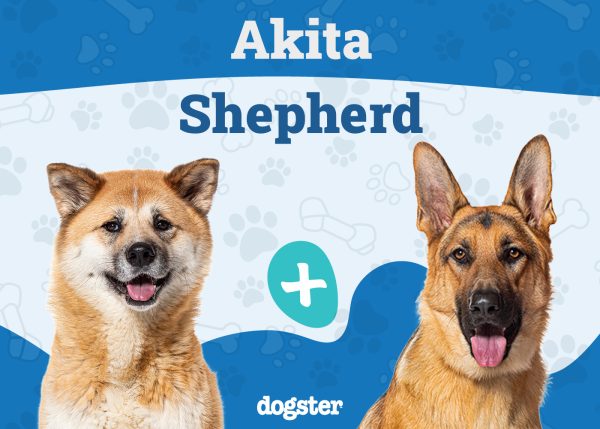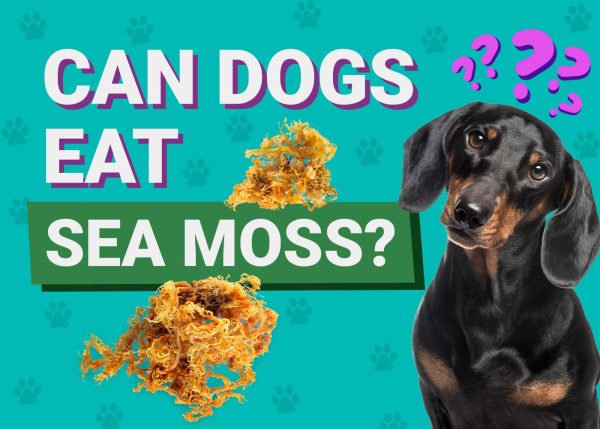In this article
There are some items in your home you know your dog shouldn’t get into because they are toxic. However, you may not know how many everyday items are hazardous to your pet. If you want to ensure your home is as safe as possible for your canine pal, check out the list below. We’ve included 20 common household items that are poisonous to dogs, and you can get rid of or lock up anything that could be a danger to your pet!

The 20 Common Household Items That Are Poisonous to Dogs
1. Alcohol

| Category: | Drink |
| Poison Level: | Medium to High |
| Side Effects: | Diarrhea, vomiting, lack of coordination, trouble breathing, death |
You know better than to give your dog alcohol, but that doesn’t mean they can’t find a way to get into it themselves. Maybe they knock over a bottle of something and start licking it up, or perhaps someone doesn’t clean up a spill as well as they thought they did. Either way, your dog drinking alcohol can be dangerous.
It can affect dogs similarly to humans, and they can suffer a lack of coordination and vomiting. Plus, alcohol can lead to liver and kidney damage in dogs, just like in humans. And if your dog consumes too much alcohol, it can result in a coma and death. So, make sure your alcohol is out of reach or locked up in a cabinet.
2. Antifreeze

| Category: | Chemical |
| Poison Level: | High |
| Side Effects: | Stumbling around, trouble getting up, increased respiratory rate, kidney failure, death |
You may keep your bottle of antifreeze up high on a shelf in the garage, but our canine friends can ingest the chemical in other ways. Your pup can find a puddle of antifreeze in the garage and decide to try it out. Since it tastes sweet to pups, they may continue licking it up. Unfortunately, even a tiny amount of antifreeze can be fatal to dogs.
You might not realize your pet has consumed antifreeze until it’s too late since the second stage of antifreeze poisoning often has your pup acting like they’re fine. So, watch for any antifreeze leaking from your car onto the driveway or in the garage!
3. Medication

| Category: | Chemical |
| Poison Level: | Medium to High |
| Side Effects: | Diarrhea, vomiting, ulcerations, kidney damage, inability to walk, overdose |
Medicines like Tylenol, ibuprofen, and multivitamins can harm your canine pal. Ibuprofen, for example, can result in not only diarrhea and vomiting but also gastrointestinal ulceration, damage to the kidneys, and death.
But did you know you should be careful with your dog’s medication, too? Dogs don’t like medication, so it is often flavored to make it more palatable. If your dog gets into their meds when you’re not around, they could consume more than they should and end up overdosing.
Regardless of whether it’s human or canine medication, keep it somewhere secure.
4. Xylitol

| Category: | Food |
| Poison Level: | High |
| Side Effects: | Low blood sugar, liver failure, seizures, vomiting, death |
You may or may not be familiar with xylitol, but it’s a product used as a sugar replacement in everything from candy to drinks to toothpaste. It’s everywhere, and it’s highly toxic to canines. Even a very tiny amount of this can cause death in dogs, so it’s vital to keep it away from your pup.
The most common cause of xylitol poisoning is sugar-free gum (according to the Pet Poison Helpline). If you suspect your dog has ingested it, you need to contact your vet immediately or contact a poison control hotline.
5. Bar Soap

| Category: | Cleaning |
| Poison Level: | Medium |
| Side Effects: | Upset stomach, diarrhea, vomiting, drooling, lethargy |
The good news is most dogs aren’t interested in eating bar soap. However, if you have a puppy around or a dog dealing with pica, they can get into your shower and eat your soap. Depending on the kind of soap you have and how much your pup eats, it can result in an upset stomach, damage to internal organs, a blockage in the intestines, or even death. Why is there such a range of reactions to bar soap? Bar soap can contain ingredients that are poisonous to dogs.
If your bar soap has glycerin, it can severely upset a dog’s stomach. Essential oils, particularly pine, wintergreen, and lavender, can be deadly. If a bar of soap has lye, it will have a corrosive effect that could cause drooling and an upset stomach. If your dog eats a large chunk of bar soap, it can cause a blockage.
6. Batteries

| Category: | Chemical |
| Poison Level: | Medium to High |
| Side Effects: | Irritation, ulcerations, perforation of the intestinal lining, tissue necrosis, abdominal pain |
Batteries are everywhere in our homes, from the TV remote to key fobs. Unfortunately, if your dog eats a battery, it can cause severe damage. The kind of damage depends on the type of battery they eat and whether they just chew on it or actually swallow it.
The most common batteries (alkaline or acid, like AAs) are corrosive and can cause irritation and ulcerations in the mouth, intestinal tract, and esophagus. The little button batteries you find in key fobs and similar items can, if swallowed, cause severe damage and even perforation to the gastrointestinal tract. Lithium-ion batteries are so incredibly corrosive that they can cause tissue necrosis in less than 30 minutes!
Batteries are a fact of life, but you can keep your pup safe by keeping your batteries locked away and keeping remotes and key fobs out of reach.
7. Bread Dough

| Category: | Food |
| Poison Level: | Medium to High |
| Side Effects: | Trouble walking, gassiness, vomiting, blindness, loss of consciousness |
Uncooked bread dough with yeast can be highly dangerous for your pup if they eat it. Yeast makes ethanol; when your dog ingests the dough, it rises in the stomach, producing ethanol. And that can lead to signs of drunkenness, like vomiting, issues with walking, and even a loss of consciousness. Not only that, but the dough rising in your pet’s stomach can lead to gassiness, bloating, and possibly even twisting of the stomach.
Having your pet treated right away typically means the prognosis will be good. However, it’s best to keep bread dough away from your dog in the first place.
8. Cleaning Products

| Category: | Chemical/Cleaning |
| Poison Level: | Medium to High |
| Side Effects: | Vomiting, abdominal pain, coma, trouble breathing, sores and blisters |
Cleaning products, like bathroom cleaners, kitchen cleaners, and bleach, are dangerous to your pet, even if they’re not ingested. Cleaning products can also affect your dog if they breathe them in or come into contact with them.
Instead of keeping harsh cleaners like bleach and ammonia around, you can use pet-friendly cleaners.
If you're looking for an all-in-one, pet-friendly, enzyme cleaner, we highly recommend the Hepper Advanced Bio-Enzyme Pet Stain & Odor Eliminator Spray.
- ADVANCED ENZYMATIC CLEANER - Penetrates the most stubborn smells and stains at the deepest molecular...
- FOR ANY MESS, ON ANY SURFACE - This pet odor eliminator cleans your carpets, floors, furniture,...
- FRESH, NATURAL ODOR - Our unique formulation doesn't rely on dangerous or unpleasant chemical...
It eliminates tough stains and odors easily and is excellent for accident prevention. Plus, it comes with a 100% satisfaction guarantee! Click here to order now.
At Dogster, we’ve admired Hepper for many years, and decided to take a controlling ownership interest so that we could benefit from the outstanding products of this cool pet company!
9. Coffee

| Category: | Drink |
| Poison Level: | High |
| Side Effects: | Excessive thirst, abnormal rhythm of the heart, tremors, vomiting, death |
You know chocolate is bad for dogs, but did you know that part of the reason is due to the caffeine it contains? When dogs consume a food or beverage with caffeine, they can get jittery and restless, and it can make their blood pressure higher and cause abnormal heart rhythms. Too much caffeine in a dog (and it doesn’t take much) can be fatal.
So, even if your pup is trying to stick their snout into your morning cup of coffee, don’t let them! Also, keep coffee beans, grounds, and any medications containing caffeine somewhere your pet can’t get to them.
10. Fabric Softener Sheets

| Category: | Cleaning |
| Poison Level: | Low to High |
| Side Effects: | Skin irritation, pulmonary edema, upset stomach, vomiting, kidney failure |
Many people use fabric softener sheets, but they may not have considered that they can be dangerous for dogs. Fabric softener sheets work because they’re coated in chemicals designed to remove static cling; these chemicals move from the sheets to the clothing when in the dryer. Depending on the type, the chemicals can be poisonous to canines.
Many fabric softener sheets contain cationic detergents, which can affect a dog’s entire body. They are corrosive and can cause mucous membrane damage, mouth ulcers, fever, upset stomach, and even fluid in the lungs. It depends on which chemicals were used in your fabric softener sheets and how much your pup ate. This is another item you want to keep stored away somewhere safe.
11. Insecticides & Rodenticides

| Category: | Chemical |
| Poison Level: | High |
| Side Effects: | Drooling, weakness, uncontrolled urination, collapse, death |
Insecticides are in the top ten items that cause toxicity in pets, and rodenticides are extremely dangerous for pups and another common reason for pet poisonings. Insecticides and rodenticides vary in which chemicals are used in them, and how those chemicals affect the pest you’re trying to get rid of can affect your pup the same way.
If you spray the lawn with an insecticide and your dog walks across not long after and licks their paws, they could be in danger. So, exercise caution when using these items.
12. Laundry Detergent
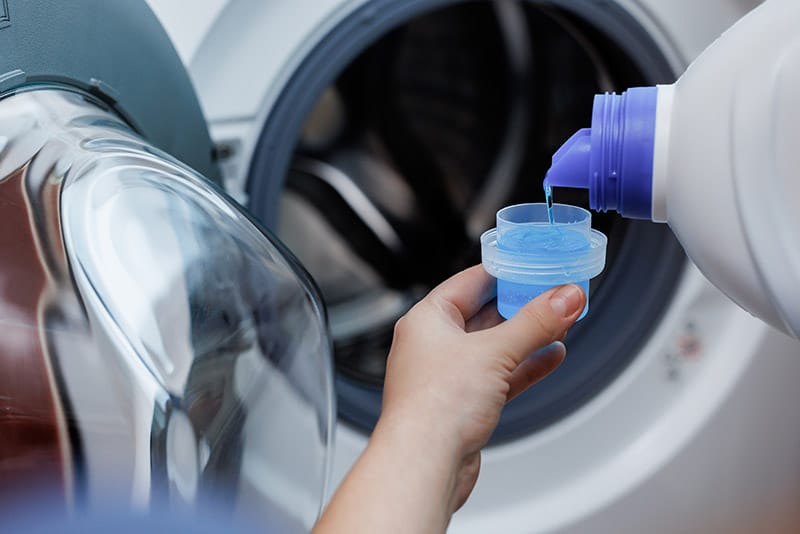
| Category: | Cleaning |
| Poison Level: | High |
| Side Effects: | Vomiting, lethargy, bubbles in the nose, aspiration, burns in the mouth |
It turns out your laundry room is more dangerous than you thought. It isn’t only fabric softener sheets that can harm your dog; laundry detergent can, too. Detergent can be deadly due to its corrosive nature. It may take as little as a single detergent pod for your dog to show signs of toxicity, like vomiting and lethargy.
However, the most lethal outcome for dogs who consume laundry detergent is aspiration pneumonitis, or an accumulation of fluid in the lungs after something poisonous is ingested or inhaled. It’s best to keep items used in the laundry room up high or locked away so your pup can’t get to them!
13. Macadamia Nuts

| Category: | Food |
| Poison Level: | High |
| Side Effects: | Lack of coordination, vomiting, depression, overheating, lethargy |
Nuts, in general, aren’t great for dogs since they contain too much salt and fat, but macadamia nuts should be avoided entirely. No one is quite sure why macadamia nuts cause dogs to react like they do, but if your pup eats even a tiny amount, they can have an adverse reaction. The worst part is that macadamia nuts are in baked goods and trail mixes, and you might not have noticed they are included in a snack you planned to give your dog.
Keep macadamia nuts far away from your pet, and be careful with any foods you give them that may contain even the tiniest bit of them!
14. Wild Mushrooms

| Category: | Food |
| Poison Level: | High |
| Side Effects: | Severe gastrointestinal upset, watery eyes, neurological symptoms, liver failure, death |
Depending on where you live, you might have wild mushrooms growing in your yard, and if your dog eats the wrong one, it can be fatal. Unfortunately, some of the most toxic mushrooms have a “fishy” odor, which can be attractive to canines, making them more likely to eat them. But if your pet licks or consumes a death cap, Deadly Agaric, false morel, or any number of other mushrooms, they could experience not only extreme stomach upset but seizures, jaundice, and death.
If wild mushrooms grow in your area, you may not know immediately if your dog has eaten one, and you probably won’t know which one they’ve eaten if they become ill. So, keep a close eye on your dog near wild mushrooms, or try to get rid of any you find so your pup isn’t tempted.
15. Fertilizer

| Category: | Chemical |
| Poison Level: | Low to Medium |
| Side Effects: | Mild stomach upset, bloat (rarely), soreness, muscle stiffness, tremors |
Most fertilizers contain ingredients such as corn, fish meal, or bone meal, making them seem like a tasty treat to your dog. For the most part, if your pet eats fertilizer, they’ll only end up dealing with mild stomach upset.
However, there are exceptions. For example, if you use fertilizer containing insecticides or pesticides and your pet eats it, the results could be much deadlier. Or if your fertilizer has started to mold, your dog could suffer tremors or seizures due to mycotoxins. Dogs who eat a large portion of fertilizer can end up with bloat.
So, even though fertilizer is mostly only mildly harmful to dogs, you still want to be careful with it.
16. Plants
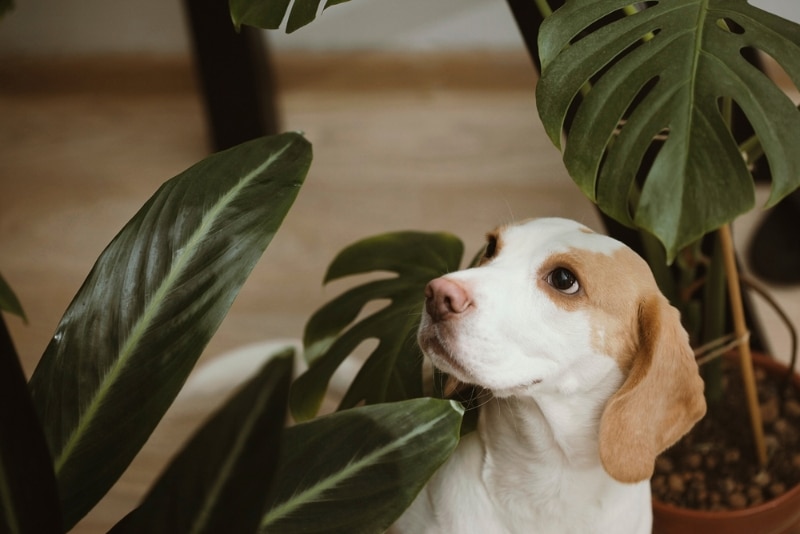
| Category: | Decorative |
| Poison Level: | Low to High |
| Side Effects: | Stomach upset, diarrhea, internal bleeding, irritation to the mouth, convulsions |
Several indoor and outdoor plants are poisonous to dogs. The effects these poisonous plants can have on canines can range from mild stomach issues to convulsions, kidney failure, and death. Some bushes and trees are also poisonous to dogs, but you can examine the ASPCA’s toxic plant list to determine which indoor and outdoor varieties are safe for pets.
17. Tobacco

| Category: | Chemical |
| Poison Level: | Medium to High |
| Side Effects: | Stomach upset, hyperactivity, excess salivation, muscle weakness, coma |
If you’re a smoker of cigarettes, cigars, or vapes or if you chew tobacco, you should be very careful where you place your butts and tobacco. Your dog can come along and eat cigarette or cigar butts or get into your tobacco pouch, and tobacco is poisonous to dogs because of the nicotine. If your pup only eats a small amount of tobacco, they can experience hyperactivity, rapid breathing, and vomiting. However, if they eat a lot, it can be fatal.
Watch out for cigarette butts when you’re walking your dog, too! Even if you aren’t a smoker, your pet could still manage to get their paws on nicotine, leading to deadly consequences.
- You might also want to check out: Can Police Dogs Smell Nicotine? Vet Verified Facts & Info
18. Toilet Water

| Category: | Drink |
| Poison Level: | Medium to High |
| Side Effects: | Stomach upset, bacterial infection, irritation to the mouth, sore throat, drooling |
Dogs are somewhat notorious for drinking out of the toilet bowl, but the habit can be more harmful to their health than you imagined. It isn’t only that toilet water contains bacteria that your pet can ingest, which could lead to a bacterial infection, but the cleaners used in your toilet bowl can cause damage. Think about the toilet drop-ins or the cleaner you use to clean the toilet bowl; now, consider the chemicals those items contain.
Bathroom cleaners have all kinds of chemicals that are poisonous to your pet. Even if you restrict your dog from the toilet bowl for several hours after you clean it, a cleaner could be poorly diluted and still linger, so it could be toxic. If you use the drop-ins that go in your toilet’s reservoir, the chemicals are released each time you flush. The chemicals can cause gastrointestinal issues, skin irritation, or death if they consume too much.
19. De-icers
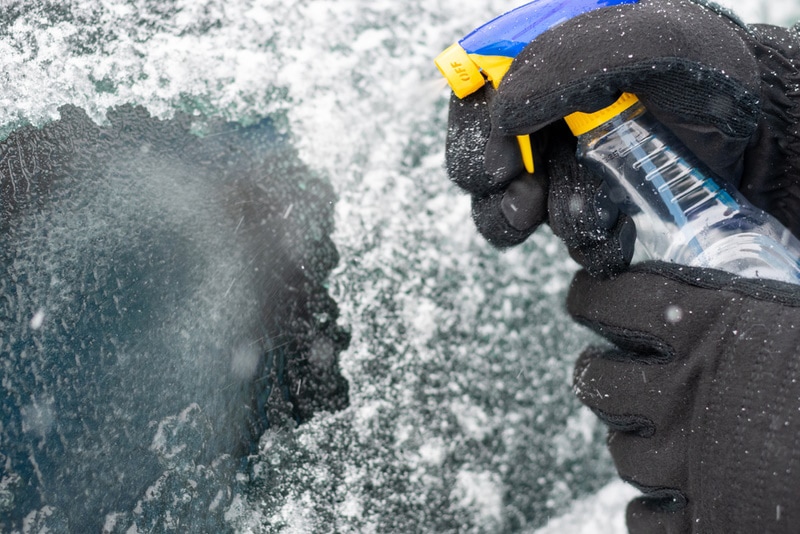
| Category: | Chemical |
| Poison Level: | Low |
| Side Effects: | Upset stomach, diarrhea, vomiting, irritated paws, higher sodium levels in the blood |
If you live in an area that gets a lot of snow and ice, you probably use de-icers. However, most de-icers are poisonous to dogs. The most common de-icers contain chloride salts, calcium carbonate, and calcium magnesium acetate, which can cause gastrointestinal upset in canines if licked. They can also cause your pup to have higher sodium levels in the blood, which isn’t safe. Plus, de-icers can easily irritate the skin of your dog’s paws.
Less commonly used are de-icers containing ethylene glycol, which is an ingredient in antifreeze that is toxic to dogs. This kind of de-icer can be deadly if ingested, so check the labels carefully on any de-icers you’re considering to ensure you aren’t getting this type.
You may not be able to avoid using de-icers in winter, but you can keep your pet away from them as much as possible or use a more pet-friendly alternative, like kitty litter or sand.
20. Heavy Metals

| Category: | Chemical |
| Poison Level: | High |
| Side Effects: | Abdominal pain, bloody diarrhea, lethargy, tremors, shock |
This is a less common type of poisoning, but it isn’t impossible for heavy metal poisoning to occur in dogs, as there may be more heavy metals in your home than you think. If your dog eats a handful of pennies, it can lead to zinc poisoning. If batteries or linoleum are chewed on or consumed, it can lead to lead poisoning. Even those hand warmers commonly used in winter contain iron powder; if a dog ingests one before the iron powder has been activated, it can be lethal.
You might want to examine your home to see if you have products with heavy metals so you can keep them away from your pup.

How Can I Keep My Home Safe for My Dog?
You’re probably wondering by now how you can pet-proof your home to keep it safer for your dog. Don’t worry; we’re here with tips to keep your pup from getting their paws on anything they shouldn’t!
- Always keep the toilet lid down.
- Use childproof latches on cabinet doors.
- Keep anything harmful (such as items on this list) out of reach by placing it up high, in a cabinet with childproof latches, or in an area where your dog isn’t allowed.
- Invest in a trash can that not only has a lid but has one that locks.
- If you drop a pill when taking medication and it rolls somewhere, hunt it down and toss it out.
- Keep poisonous plants out of your home.
- If you have poisonous plants, shrubs, or trees in your yard, remove them, keep your dog away from them at all times, or surround them with chicken wire or something similar that will keep your pet away.
- Always clean antifreeze leaks up!
- If your dog can reach it, it isn’t a place where poisonous products should be set out.
- Utilize gates in your home if there’s an area your pup shouldn’t be in.
- Invest in pet-safe cleaners and de-icers.
- Always keep an eye on your pet.
- If you’re leaving the house and your dog is staying, either crate them or limit them to a specific area that you know is entirely pet-proof.
- Don’t feed your pet human food without talking to your vet.
- Store the number of the pet poison hotline and emergency veterinary clinic in your phone.
Utilizing these tips will go a long way in helping your dog remain safe while at home!
If you need to speak with a vet but can't get to one, head over to PangoVet. It's our online service where you can talk to a vet online and get the advice you need for your pet — all at an affordable price!

Conclusion
There are a lot more common household items that are poisonous to dogs than you might imagine. However, if you’re aware of the danger, you can keep your dog safe. Be sure to keep anything that could be dangerous far out of your pet’s reach, and remember to keep an eye on your pup at all times to ensure they aren’t getting into things they shouldn’t. By doing this, your favorite canine pal will be much less likely to ingest something that could harm them!
See also:
Featured Image Credit: Freedomz, Shutterstock








